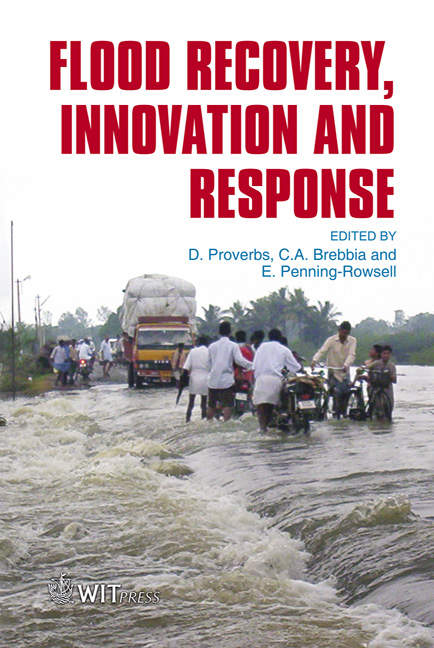From Hazard Reduction To Integrated Risk Management: Toward Adaptive Flood Prevention In Europe
Price
Free (open access)
Transaction
Volume
118
Pages
10
Page Range
113 - 122
Published
2008
Size
633 kb
Paper DOI
10.2495/FRIAR080111
Copyright
WIT Press
Author(s)
F. Vinet
Abstract
Flood risk has long been seen only as a hydrological phenomenon. Flood risk management has therefore been directed almost exclusively toward curative methods. Dykes and dams have attempted to contain the floods while crisis management and insurance have compensated for loss. However, the acknowledgement of human responsibility in natural disasters has widened the epistemological field of natural-hazards knowledge integrating the concept of vulnerability. Recent and disastrous floods all over the world have highlighted the relative failure of the existing risk-management system. Over the past fifteen years, the increasing cost of damage has caused a reaction of the authorities, who have expressed through various laws and incentive measures their wish to develop integrated risk management. The integrated approach uses not only curative methods but also land-use planning, reduction of vulnerability and the development of public awareness by implementing local emergency plans. Through some examples in France, this presentation aims to suggest new ways of assessing risk-management measures. The French territory, located between northern and southern Europe, is concerned by all kinds of floods: slow-rise floods in its northern part and flash floods in mountainous and Mediterranean regions. For many years, the top-down institutional approach has led to the implementation of measures ill-adapted to Mediterranean regions. Thus, this presentation shows how some measures, efficient for slow floods, are inefficient for Mediterranean torrential floods. While the new European Directive on Flood Risk is willing to reinforce flood prevention in Europe, it is important to take into account the specific characteristics of each basin and each hydrological context before implementing flood-reduction measures such as upstream control, vulnerability reduction or flood warning. Stakeholders and institutions might implement an adaptive and territorial approach in flood prevention so as not to repeat the serious mistakes that we have seen for many years. Keywords: natural hazards, floods, vulnerability, mitigation, flood risk management, European directive, Mediterranean basin.
Keywords
natural hazards, floods, vulnerability, mitigation, flood risk management, European directive, Mediterranean basin.





